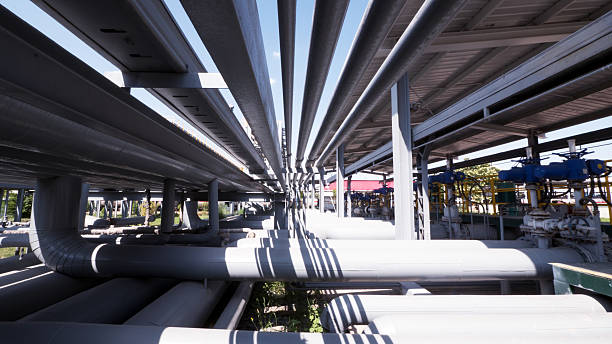The utilization of Schedule 40 pipe in industrial applications brings forth a myriad of business benefits, shaping the landscape of construction, manufacturing, and various other sectors. This article explores the fundamental aspects of Schedule 40 pipe, defining its characteristics and shedding light on the distinctions between Schedule 40 and its counterpart, Schedule 80.
Understanding Schedule 40 Pipe
Definition and Composition
Schedule 40 pipe is a standardized designation within the domain of industrial piping. It refers specifically to the wall thickness of the pipe, with materials such as steel or PVC commonly used in its construction. The choice of material varies based on the specific requirements of the industry, with steel Schedule 40 pipe known for its strength, while PVC Schedule 40 pipe offers corrosion resistance and versatility.
Versatility and Applications
Steel Schedule 40 Pipe
Steel Schedule 40 pipe is recognized for its robustness and strength, making it a preferred choice in applications where durability is essential. Industries like construction and manufacturing rely on the structural integrity of steel Schedule 40 pipes to withstand high pressures and external stresses. UNIASEN steel pipe is a leader in these fields.
PVC Schedule 40 Pipe
PVC Schedule 40 pipe, on the other hand, is favored for its versatility and resistance to corrosion and chemicals. Its lightweight nature makes it easy to handle and install, contributing to its popularity in water distribution systems, drainage, and other applications where a smooth interior is crucial for efficient fluid flow.
Schedule 40 vs. Schedule 80: Unveiling the Differences
Wall Thickness Distinctions
The primary divergence between Schedule 40 and Schedule 80 lies in the thickness of their walls. Schedule 80 pipes have thicker walls compared to Schedule 40 pipes, influencing their respective performance characteristics and areas of application.
Strength and Pressure Ratings
Schedule 40
Schedule 40 pipes strike a balance between strength and cost-effectiveness. They are well-suited for a broad range of applications, offering sufficient pressure-bearing capabilities for standard industrial and residential uses. While the pressure rating of Schedule 40 pipes is lower than that of Schedule 80, it is often more than adequate for many scenarios.
Schedule 80
Schedule 80 pipes, with their thicker walls, exhibit higher strength and pressure-bearing capabilities. This makes them ideal for applications where the pipeline is exposed to elevated pressures or external stresses. Industries dealing with heavy-duty processes, such as chemical manufacturing or high-pressure fluid transportation, often opt for the enhanced strength of Schedule 80 pipes.
Application Variability
Schedule 40
The versatility of Schedule 40 pipes makes them suitable for a broad spectrum of applications. Common uses include residential plumbing, water distribution networks, and general-purpose industrial processes. The cost-effectiveness and ease of installation contribute to the widespread adoption of Schedule 40 pipes.
Schedule 80
Schedule 80 pipes find their niche in scenarios where the pipeline is exposed to challenging conditions. This includes chemical processing plants, industrial facilities requiring high-pressure systems, and situations where the pipe may be subject to physical impact or stress.
Cost Considerations
Cost is a significant factor influencing the choice between Schedule 40 and Schedule 80 pipes. Schedule 40 pipes are more budget-friendly due to their thinner walls and lower material requirements. In contrast, Schedule 80 pipes, with thicker walls and higher material content, come at a higher cost. The selection between the two depends on the specific needs of the project, considering factors such as pressure requirements, environmental conditions, and budget constraints. Learn more about the comparison between the two to help you better choose the type of pipe suitable for your project.
Business Benefits of Schedule 40 Pipe
Cost-Effectiveness and Versatility
One of the primary business benefits of Schedule 40 pipe lies in its cost-effectiveness and versatility. The thinner walls contribute to a more economical solution, making it an attractive choice for businesses aiming to balance performance requirements with budget constraints. The ability to cater to a diverse range of applications enhances its versatility, providing businesses with a flexible and scalable solution for their infrastructure needs.
Ease of Installation and Operational Efficiency
Schedule 40 pipe offers businesses the advantage of ease of installation. The lightweight nature of these pipes, combined with their standardized dimensions, facilitates quick and efficient installations. This is particularly beneficial for businesses with tight project timelines, allowing them to meet deadlines and enhance overall project efficiency. The streamlined design of Schedule 40 pipes also ensures a smooth flow of operations, minimizing friction and interruptions in fluid or material transportation.
Durability and Long-Term Savings
The durability of Schedule 40 pipes contributes to long-term savings for businesses. Their ability to withstand external stresses and pressures reduces the need for frequent replacements and maintenance. This not only saves on material and labor costs but also ensures a reliable and durable infrastructure that can stand the test of time. Businesses can allocate resources more efficiently, focusing on growth and innovation rather than dealing with the recurrent expenses associated with infrastructure maintenance.
Environmental Considerations
In an era where sustainability is a growing concern, Schedule 40 pipe aligns with environmental considerations. The recyclability of materials used in these pipes contributes to sustainable practices in construction and manufacturing. Businesses adopting Schedule 40 pipe demonstrate a commitment to eco-friendly solutions, appealing to environmentally conscious consumers and meeting regulatory standards. The reduced carbon footprint, stemming from the extended lifespan and recyclability of Schedule 40 pipes, positions them as a choice that harmonizes with environmentally responsible business practices.
Conclusion
In conclusion, the business benefits of Schedule 40 pipe are vast and encompass various aspects, from cost-effectiveness and ease of installation to durability and environmental considerations. The understanding of the differences between Schedule 40 and Schedule 80 pipes allows businesses to make informed decisions based on their specific project requirements. As industries evolve, the versatility and reliability of Schedule 40 pipe continue to position it as a cornerstone in the construction and manufacturing landscape, contributing to the success and sustainability of businesses worldwide.


